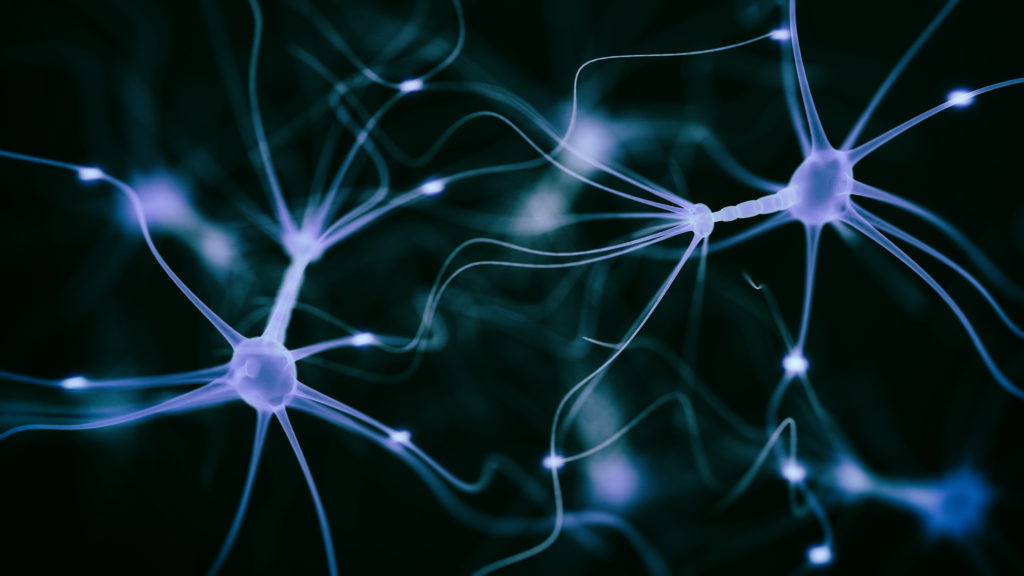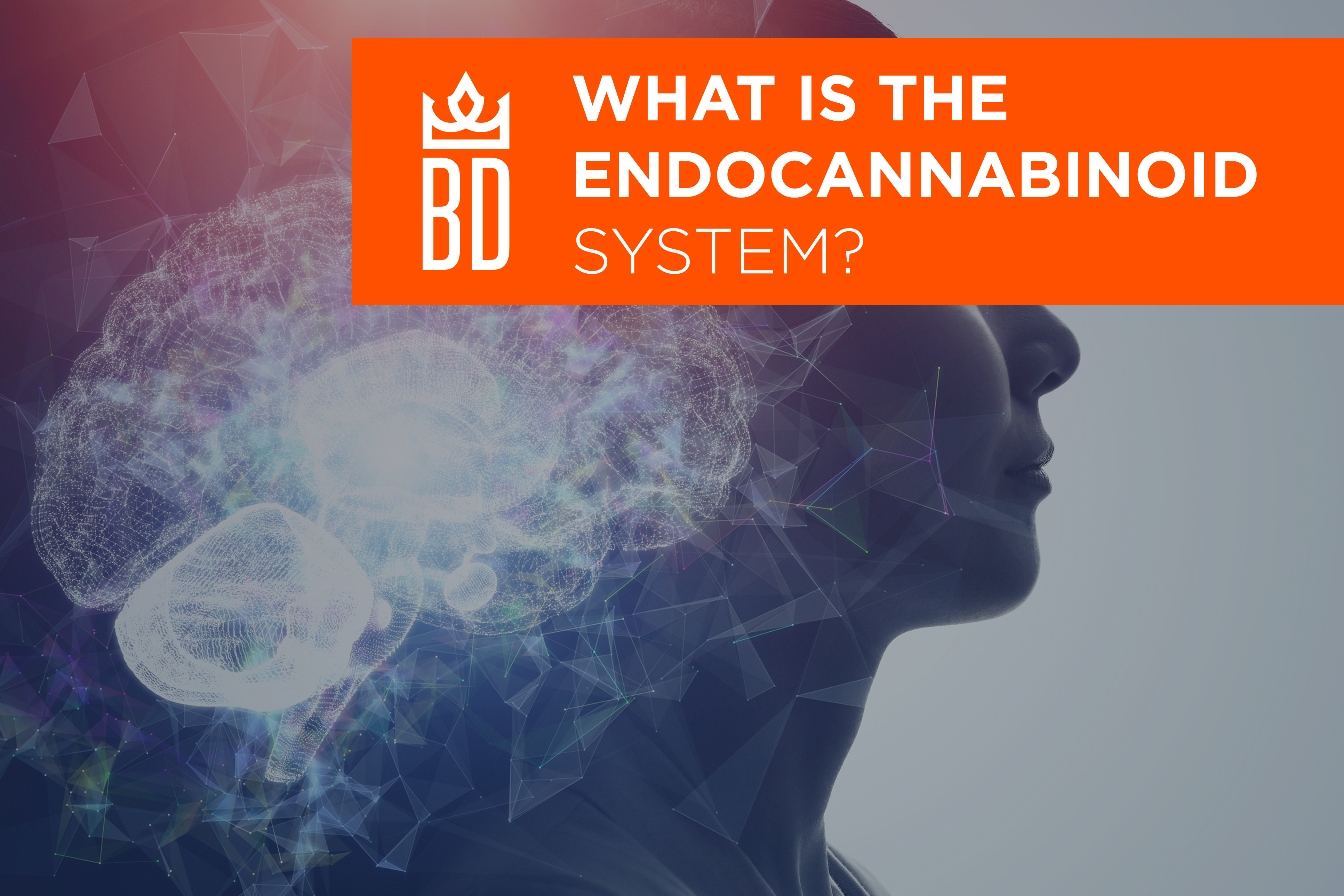Discovered by scientists in the early 1990’s, the endocannabinoid system is responsible for regulating many basic functions throughout the body including mood, appetite and memory.
The system can be activated by cannabinoids that are naturally created by the body (endocannabinoids) and those found in the cannabis plant (phytocannabinoids) which, as you may have guessed, is where it got its name (‘endo’ means ‘internal’ and ‘phyto’ means ‘plant’).
Cannabinoid receptors were discovered because researchers were trying to understand how phytocannabinoids like THC interact with the body. They were named cannabinoid receptors after the main chemical that activates them – cannabinoids.

Scientists later discovered that the body produces very similar molecules that fit the same receptors. They were named endocannabinoids.
Among the functions regulated by the endocannabinoid system (ECS) are memory, appetite, body temperature, the immune system, sleep, pain and the female reproductive system. By regulating these functions, the ECS is believed to help maintain balance, or “homeostasis” in the body. In fact, the ECS has even been called a master regulator of homeostasis.
How does the Endocannabinoid System work?
In order to understand what the ECS is, it’s helpful to imagine the process of how it works. Take pain, for example.
Let’s imagine a woman named Emma is jogging with her dog in the park. She trips on a rock and twists her ankle. Emma immediately feels pain, which is a reaction to the impact of hitting the ground.

Once the fall is over however, the immediate pain is no longer necessary, so the central nervous system (CNS) recruits enzymes to slow down and stop the pain signals. These enzymes then create special molecules called endocannabinoids, primarily anandamide and 2-AG, to get the job done.
The Primary Endocannabinoids: Anandamide and 2-AG
Anandamide
Commonly referred to as the “bliss molecule”, anandamide plays a key role in the regulation of mood, reward response, and emotion.
Low anandamide levels are linked to depression, anxiety, and schizophrenia. Interestingly, many of the prescription medications used to treat pain and depression may be associated with increased levels of anandamide.
2-AG (2-Arachidonoylglycerol)
Research shows that one of the main functions of 2-AG is reducing inflammation while regulating other essential functions of the immune system.
Like anandamide, 2-AG is involved in the regulation of mood, emotion, and pain perception, while also playing a role in memory, reproductive health and sleep cycle regulation.

These endocannabinoids are known as lipid signals which activate specific cellular receptors- kind of like a key that only opens a certain type of lock.
These “locks” are actually receptors that sit on the cells throughout the body.
In the case of a sprained ankle, like our friend Emma above, enzymes create endocannabinoids to promote appropriate inflammation at the site of injury- and she starts to experience pain relief. This process actually happens in seconds, with the body producing endocannabinoids on demand, using them, and then rapidly breaking them down.
Cannabinoid Receptors: Why Cannabis Can Help So Many Conditions
While we don’t know yet exactly how cannabis works, we do know that it can interact with the ECS, which is present all over the body.
We know that the ECS is very active in the brain, and specifically in areas that involve conditions such as Parkinson’s disease, Alzheimer’s disease, chronic pain, stress, epilepsy, and autism spectrum disorder (ASD).
Cannabinoid receptors are also abundant in the immune system, which explains why cannabis can help people who suffer from conditions such as Crohn’s disease and ulcerative colitis. These receptors are also found on skin cells, where cannabis can interact with dermatologic conditions such as psoriasis, and they’re present in the lungs, which correlates with pulmonary conditions.
In short, the main reason why cannabis is effective for so many different conditions is that it interacts with a system that is present all over the body.

There are two main types of cannabinoid receptors, aptly named cannabinoid receptor 1 (CB1) and cannabinoid receptor 2 (CB2).
CB1 receptors
CB1 receptors are found throughout the body, with the highest concentrations found in the brain and spinal cord. CB1 receptors in the hypothalamus regulate metabolism, while CB1 receptors in the amygdala are responsible for regulating emotional response. CB1 receptors are also abundant in most nerve endings, where they regulate signals such as pain.
CB2 receptors
While CB2 receptors are also found throughout the body, they are most concentrated within the peripheral tissues involved in immune function. CB2 likely plays a role in regulating immune response to diseases, as the body often increases the availability of this receptor in injured tissues. When activated, CB2 receptors reduce inflammation.
Researching Cannabis and the ECS

Research on the ECS and cannabis is fairly young. The first cannabinoid receptor (CB1) was discovered in 1988 by an American research team at Saint Louis University, and the first endocannabinoid (anandamide) was discovered in Israel only four years later by Bill Devane, Lumir Hanus and Raphael Mechoulam.
Cannabis was completely prohibited for decades, making it inaccessible as a treatment. That means most of the early evidence of its medical uses was based on anecdotal evidence from people who were technically breaking the law. Barriers to research still exist today.


